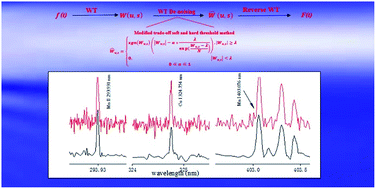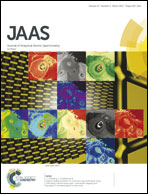Accuracy improvement of quantitative LIBS analysis using wavelet threshold de-noising
Abstract
Laser-induced breakdown spectroscopy (LIBS) is becoming a rapid and easy technique for quantitative elemental analysis. However, the implementation of accurate quantitative LIBS analysis is always subject to noise interference. In this work, in order to improve LIBS analysis performance for trace elements in aluminium alloys, a modified trade-off soft and hard threshold method is proposed based on the wavelet theory, where optimal parameters are deduced to eliminate noise interference. By using the modified algorithm combined with an Al I line at 308.215 nm as an internal standard, the statistical parameters including the determination coefficient (R2), the root mean square error (RMSE) and the relative standard deviation (RSD) of magnesium (Mg), manganese (Mn) and cuprum (Cu) in aluminium alloys are all significantly improved. The most significant improvement of R2 is 0.066 for Cu. The maximum RMSE reduction value is 0.583 for Mg, and the mean value of RMSE reduction is 0.261 for all three trace elements. And after de-noising, the value of RSD gets smaller for each trace element. Such results indicate that the optimized algorithm is valid for the effective improvement of the accuracy of quantitative LIBS analysis in the trace element determination of aluminium alloys.



 Please wait while we load your content...
Please wait while we load your content...